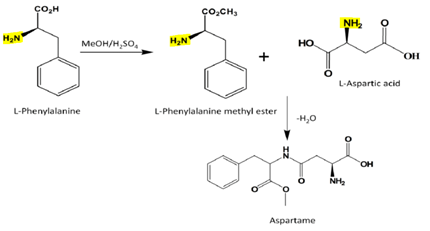Dear all,
Recently I was asked to do a nitrosamine risk assessment and one of the excipients used is the sweetener aspartame.
Are nitrosamines possible to be created from the amide bond?
Thank you.
Dear all,
Recently I was asked to do a nitrosamine risk assessment and one of the excipients used is the sweetener aspartame.
Are nitrosamines possible to be created from the amide bond?
Thank you.
Hi,
Putting my 2 cents here ![]()
As indicated by the WHO in Aspartame hazard and risk assessment results released (who.int), what seems to be the objective of the IARC to put this sweetener as class 2B is for industry and regulators to further deep dive on the actual risk.
“The findings of limited evidence of carcinogenicity in humans and animals, and of limited mechanistic evidence on how carcinogenicity may occur, underscore the need for more research to refine our understanding on whether consumption of aspartame poses a carcinogenic hazard,”
Endogenous formation is until now not included in the current nitrosamines Q&A. As limits by endogenous formation should consider all possible sources, not only medicines and that is complex, but diets around the world also differ greatly.
Even through the IARC put the compound in group 2B, the current acceptable intake has not been moved as indicated in Aspartame hazard and risk assessment results released (who.int). The quantity of aspartame used in the pharma industry in their formulations is diminutive in comparison with food industry. Dozens of coke cans/day would be needed to be over the current acceptable intake.
JECFA concluded that the data evaluated indicated no sufficient reason to change the previously established acceptable daily intake (ADI) of 0–40 mg/kg body weight for aspartame. The committee therefore reaffirmed that it is safe for a person to consume within this limit per day. For example, with a can of diet soft drink containing 200 or 300 mg of aspartame, an adult weighing 70kg would need to consume more than 9–14 cans per day to exceed the acceptable daily intake, assuming no other intake from other food sources.
Regarding the availability of suppliers selling the amide derivative nitroso compound N-Nitroso Aspartame | | nitrosamine Impurities (clearsynth.com) & N-Nitroso Aspartame | SynZeal I would really doubt unless an in depth characterization and mass fragment evaluation is performed that actually, what the externals sell is the secondary amide nitroso product. How it is avoided the nitrosation of the primary amine section, without any protective group for example? If it is really possible to synthetize this compound, I expect would be in a very specific synthesis not representative of the actual synthesis either individually or as part of the finished product manufacturing.

I would say that the formation of stable nitroso compounds is very much limited and should not be a concern.
Just to add one point- the history of use with aspartame really not provided any concrete evidence in healthy humans causing cancer until now.
But recent studies has shown that aspartame at higher doses really perturbs onco proteins.
https://www.nature.com/articles/s41598-024-62461-w
Nitroso aspartame might behave different when compared to aspartame.
The blessing is disguise is, if aspartame is really a potent carcinogen then the N-nitroso asparatme might become less relevant relatively!!
On the nitrosamide of aspartame: Important to stress that at least to the best of my knowledge literature published (mutagenicity) studies only focus on “aspartame subjected to nitrosation conditions”, with no characterisation of compounds present in such mixtures let alone testing of purified “nitroso-aspartame” in vitro or in vivo. For some alternative compounds this has already been shown to be a limitation in interpretation of historic studies, for “nitrosated aspartame” considering selectivity (and possibly stability) considerations together with the historic scientific debate on aspartame effects on its own this seems an important limitation as well.
Thank you all for these insights. Really appreciate your time to reply to me. Thnx again!